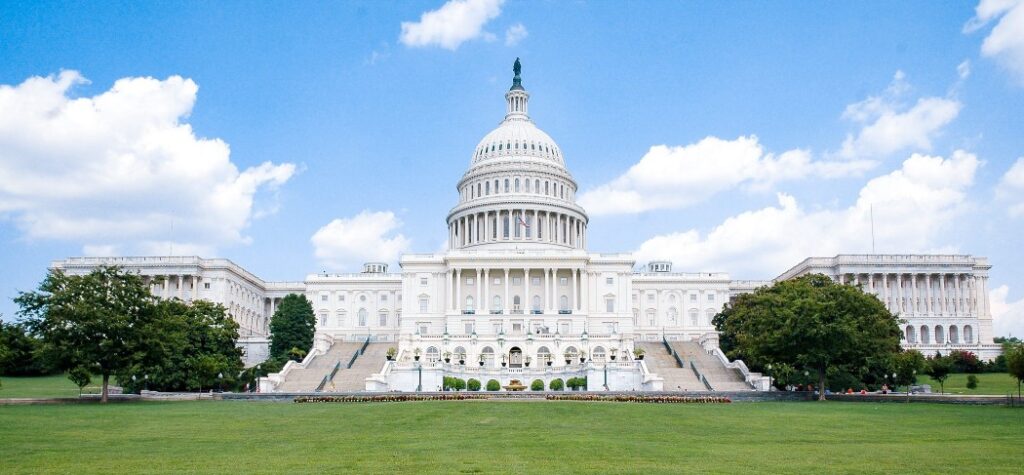The 2nd annual Lyme Fly-In was held on Wednesday, February 24th. In a unique twist caused by the pandemic, this year’s fly-in was held entirely via Zoom, which allowed for the 4x participation rate compared to 2020. More than 250 advocates registered for the event. These individuals attended more than 200 meetings with Senators, Members of Congress, and their staff. Many staffers commented positively on the day and highlighted how it allowed constituents to access a platform in which they could voice their stories and communicate to their representatives.
The event was hosted by Center for Lyme Action (CLA) and considered a success by many who participated. “With the help of so many Lyme advocates and their legislators, we are encouraged by the increase of Lyme disease federal funding from $55M in FY20 to $108M in FY21 — across many federal agencies” said Bonnie Crater, co-founder and board member at Center for Lyme Action, “Despite the increase, per patient funding remains low for Lyme disease. We still have much work to do”.
Advocacy is an integral part of Project Lyme’s mission. As a founding charter member of Center for Lyme Action, the organization had many representatives present throughout the day including members of our Board of Directors and staff, the Generation Lyme initiative, as well as community volunteers. Project Lyme board member Melissa Bell, who led a constituency of advocates in Florida, said “Lyme disease has been grossly underfunded for far too long. The Center for Lyme Action Virtual Fly-In provided an outstanding opportunity for Lyme patients to educate lawmakers, share their experiences, and request much needed funding of various CDC, NIH, HHS and DOD programs.”
The main purpose of the Fly-In was to gain support for increased federal appropriations focused on tick-borne diseases. Getting representatives to buy is imperative to money actually going towards the goals of the Lyme community. Higher accuracy in case reporting, better intergovernmental communications, and innovative ways to diagnose and treat are just some of the things advocates asked for. Center for Lyme Action focused on six requests to increase appropriations for fiscal year 2022:
- Increase funding for the Kay Hagan Tick Act to provide academic training so health care professionals can better identify Lyme in patients (+25m)
- Increase the research budget for NIH NIAID to do studies that produce better diagnostics (+20m)
- Increase funding for DOD to better understand the impacts of tick-borne illnesses on military personnel (+5m)
- Allocate funds to better HHS interagency coordination of data collection and analysis (+5m)
- Increase funding for the LymeX innovation accelerator (+3m)
- Allocate funds to CDC & HHS to create better surveillance protocols (+5m)
Advocates also communicated the large number of people affected by Lyme, as well as how significantly underfunded it is compared to other Infectious Diseases. According to the CDC, 476,000 Americans have received a Lyme diagnosis every year in the last decade, and up to 20%, suffer from chronically persistent Lyme symptoms. Last year, the National Institute of Health funding for Lyme was a mere $63 per patient. In comparison, funding for much more rare diseases, such as West Nile and Malaria, receive significantly more funding, $13,600 per patient and $118,823 per patient, respectively. Citing these data points allowed advocates to dispel myths that Lyme is a “rare disease” and deserves increased budget appropriations.
Some Congressional leaders and their staffers were familiar with the issue of Lyme and how it can affect patients due to their knowledge of a colleague’s experience with tick borne illness. “I know that Lyme has definitely gotten more attention here on the Hill… very unfortunately, but I think one good thing that came out with Senator Hagan and her sudden death, is that finally, thankfully, lawmakers are paying attention to this issue,” said one Legislative Director.
After sharing personal stories and following the prompts from CLA, many staffers expressed their appreciation and recognized how important these meetings are to convey constituents’ concerns. “It’s helpful for us to hear directly from you [advocates],” said one staffer. “You hear numbers float around, and you don’t really know how it affects real people. This will help me to educate him [a state representative], and remind him of what it means. I appreciate you sharing with me about what you have gone through and how this will help people like you.”
For those who weren’t able to attend but are still interested in being a voice for increased Lyme appropriations, you can visit your Congressional representative’s page and search for appropriations form. Once there, use the appropriations requests outline from Center for Lyme Action to help you accurately fill out the form.
Project Lyme plans to maintain its support of the Center for Lyme Action and looks forward to continuing the fight for the needs of Lyme patients on Capitol Hill.



